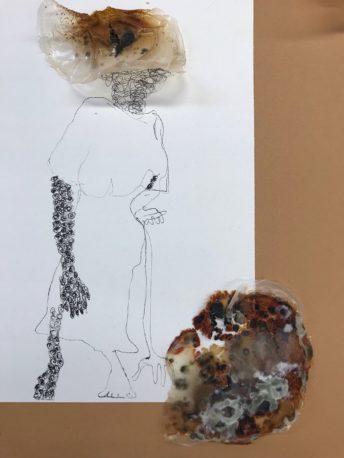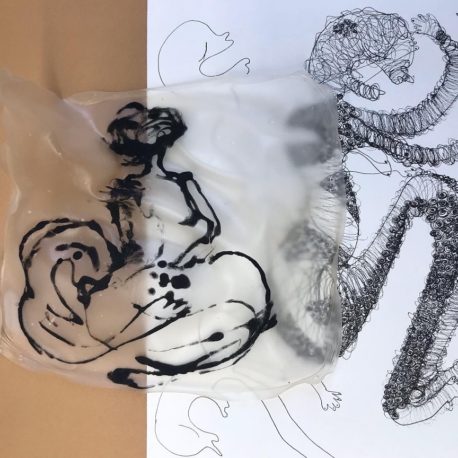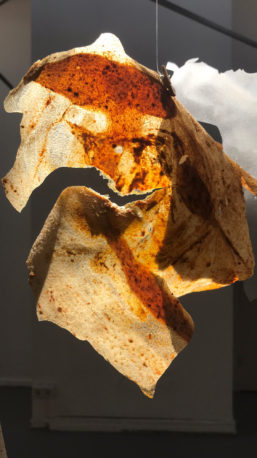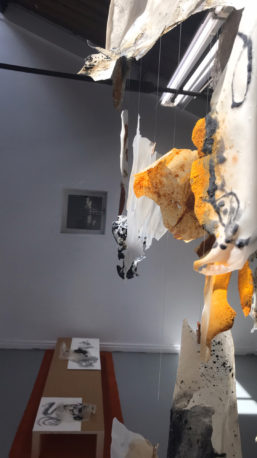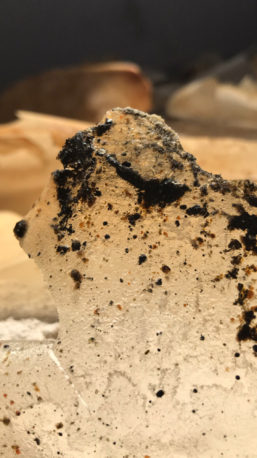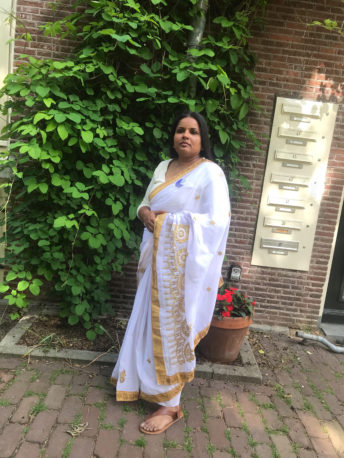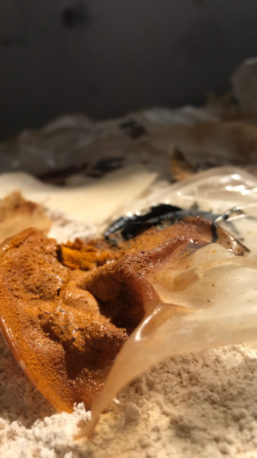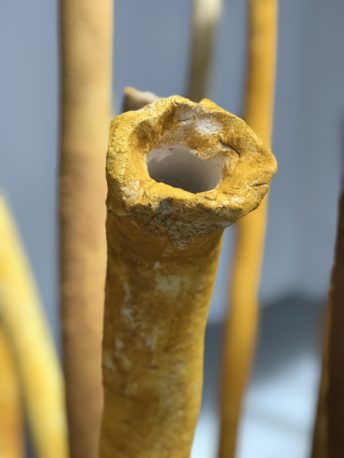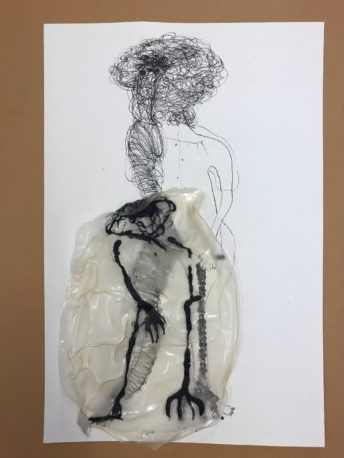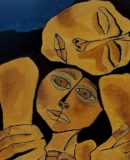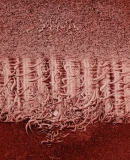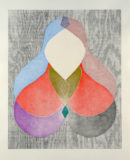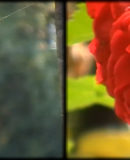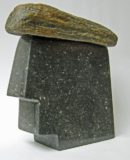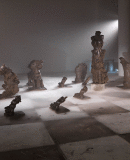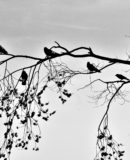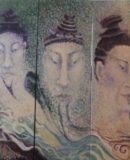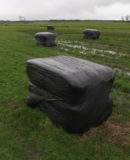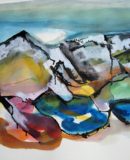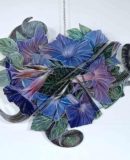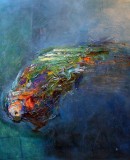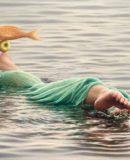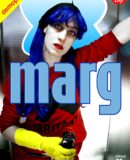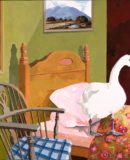World Fine Art Professionals and their Key-Pieces, 367 - Razia Barsatie
World Fine Art Professionals and their Key-Pieces, 367 – Razia Barsatie
At the exhibition Residency 2021-2022 of the Rijksakademie in Amsterdam I saw the work of Razia Barsatie. Seeing isn’t really the right word, I smelled the work. And I saw a lot of yellows. And I heard growling sounds coming from a “bunch” of yellow pipes.
The strong tropical scent in the entire studio lingered the most. I needed to know more about this. I made an appointment with the artist who turned out to be from Suriname, but who had been studying in the Netherlands for quite some time and was active as an artist.
Scent
What I smelled was a mix of turmeric, chili pepper and masala, Razia tells me. “Scent is a very important element in my work. It’s the first thing I want to grab the viewer with. You feel it immediately and through that I bring you back to your past, to your memories. With scent I create an atmosphere and I am open to all associations that this evokes. These can help understand the work. For me, the scent in my work is a protection, a therapeutic atmosphere where I feel safe. And I want to share that.”
It is one work of art that she shows, divided into two parts of the space. One space, with yellow pipes from which dangerous sounds come out, depicts the unconscious world, the larger space by extension depicts the conscious world. The pipes from which the sounds flow symbolize the esophagus opening into as many mouths. Razia: “Words form in the esophagus, which initially come out with great difficulty. But, once in motion, it pours out. These words can no longer be held back. So, after realizing what you have done to someone, you can say sorry to someone, but what does ‘sorry’ mean to yourself? Is that ‘sorry’ enough for the victim to be able to process the harsh words you uttered?”
The ‘conscious’ world
It is about traumas and fears that are processed in this way. “It concerns victims in the family who do not dare to discuss something. It is about the suppressed feelings and how topics such as child abuse in the family, sex, marriage to another race/religion, are seen as taboo. This leaves the child with a fear, which they have to live with for the rest of their life. The sounds and voices in the work are voices that repeat themselves over and over in an anxious brain. ‘Keep your mouth’ has always been said and this is repeated continuously in the work, in Dutch and in my mother tongue, Sarnami. With this repetition I create an atmosphere of ‘self’ comfort.”
Razia is part of the Hindustani population in Suriname. “In traditional upbringing you get a lot of messages. An important message I received was not to hang the dirty laundry outside. It applies to all population groups in Suriname, including Surinamese Hindu in the Netherlands. The Surinamese Hindu community is quite conservative. Shame in the family should not go out. You have to keep your mouth shut. In something as extreme as child abuse, the motto is: shut up.
As an artist I confront this behavior with the cultural traditions that my ancestors brought from India to Suriname more than 150 years ago and which have been preserved there as if time stood still. I want to know what this severe oppression means for children and want to make it a topic for discussion.”
The ‘unconscious’ world
We walk to the ‘unconscious world’, the second part of the exhibition. There are various installations. Drawings are drawn in charcoal on the walls. There are dozens of transparent sheets without color that are made from tapioca starch. Some resemble fish scales, others resemble prawn crackers (Javanese chips). They are colored with herbs and other sheets have charcoal drawings.
“With this material I imitate the skin. The material is fragile, is transparent, can sometimes be flexible, gets moldy and constantly changes in its shape. The material is alive. In this research, I did the same thing every day, but got a different result every time.
In my follow-up research I want to document the drying process, what do we see when the work goes from wet to dry? When does mold develop? When will it wrinkle? When will the cracks appear?”
Sheets on the ground and on bars
She started working with herbs and fragrances in 2013. “I wanted to develop my own art material, on the one hand as an art identity and on the other as a material that is available anywhere in the world and easy to carry. I started to delve into adding the herbs, in powder form, to the tapioca as a binding agent to make 3D herbal objects. The materials research lasted two years. In this research I discovered that the tapioca binder behaves like a natural epoxy.”
There is a brown tapioca skin on the floor. That was not the intention initially. “I picked it up and hung it up, every time it fell to the ground. I spoke to it: ‘you want to go your own way’. Finally I said to it: ‘You must stay here: on the ground’. Sheets hang from the ceiling rods. “The sheets started to stick together. Nor the intention. Sometimes the work gives you information if you open yourself up. As an artist, I respond to every action and information I receive from my research.”
Charcoal drawings
In the black charcoal drawings on the walls we see the timeline of how the fears grew. “I feel like I’ve almost translated ‘the wiped out’ back. Sometimes something recognizable appears, sometimes it is more abstract. The round lines in the head look like a chaotic brain. They are psychic patterns. You are confused. You try something, but you don’t know the result. By drawing and repeating these patterns, my brain relaxes. In every pattern I see myself. All those spiral patterns look like an eye to me. An eye that looks at me, an eye that observes.
With every elaboration of a concept, I first draw on an A3 sheet, and then I translate it into installations or murals.”
Artists who have inspired her are Kara Walker and William Kentridge. “Kara Walker for her work on pain and history. Kentridge on the diversity of his subjects and for the use of charcoal. Lately I have also been interested in work by Herman de Vries. How he deals with nature. How he focuses on natural objects.”
And now…
Razia Barsatie has been an artist since 2013. In 2012, she graduated from the Rietveld Academy in Amsterdam, after which she went to the Rijksakademie van Beeldende Kunsten. In between, she participated in residencies in Suriname, the Netherlands, Aruba and French Guiana. In the Netherlands she has also participated in group exhibitions such as ‘The Big Surinam Exhibition’ (De Grote Suriname Tentoonstelling) in the Nieuwe Kerk (2019); ‘Pure’, New Dakota (2017) and many more. From 2012 to 2019 she taught at Nola Hatterman Art Academy in Paramaribo.
Now she is going to do a number of projects. The elaboration of the documentation material continues and she will also exhibit the work in a different setting. In September she will go to Aruba for a month with the tapioca material. And in November she will be working as a collective with a group of artists in Suriname. “Marjet Zwaans and I initiate the Collective Un Prati a Patu (CUPP Collective). ‘Un Prati a Patu’ literally means ‘we share the pot’ in Sranang Tongo. This usually refers to the meal, but it can also be financial. In the concept of CUPP collective it is more about sharing knowledge and experiences. In our exchange program, we invited four others to join the collective to conduct material research. In March 2022, these artists started material research and visited various material labs, workshops and exhibitions in the Netherlands. To continue the research, we will meet crafters in Suriname to see how they relate to their art material.”
Finally, what is her philosophy? Razia: “My work helps me to express my fears and make them discussable. I hope that my work can mean a lot to others in the future.”
https://www.raziabarsatie.com/https://www.instagram.com/raziabarsatie/https://www.rijksakademie.nl/en/residents-advisors-team/razia-barsatiehttps://ifthenisnow.eu/nl/verhalen/de-geur-centraal-in-het-werk-van-amsterdamse-kunstenaar-razia-barsatie
Disclaimer: The views, opinions and positions expressed within this guest article are those of the author Walter van Teeffelen alone and do not represent those of the Marbella Marbella website. The accuracy, completeness and validity of any statements made within this article are not guaranteed. We accept no liability for any errors, omissions or representations. The copyright of this content belongs to Walter van Teeffelen and any liability with regards to infringement of intellectual property rights remains with the author.

